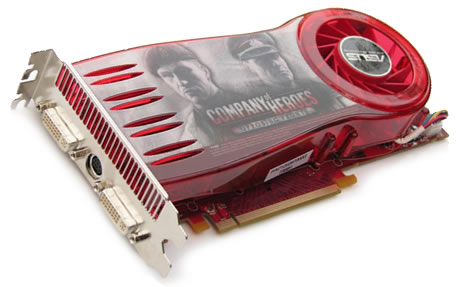
Memory read/write cache for improved stream output performance.Accelerated geometry shader path for geometry amplification.8 render targets (MRTs) with anti-aliasing supportįull support for Microsoft DirectX 10 / 10.1.Lossless Z & stencil compression (up to 128:1).Early Z test, Re-Z, Z Range optimization, and Fast Z Clear.Double-sided hierarchical Z/stencil buffer.Fully associative texture Z/stencil cache designs.High resolution texture support (up to 8192 x 8192).Fully associative multi-level texture cache design.Up to 80 texture fetches per clock cycle.Command processor for reduced CPU overhead.128-bit floating point precision for all operations.Dedicated branch execution units and texture address processors.Common instruction set and texture unit access supported for all types of shaders.Dynamic load balancing and resource allocation for vertex, geometry, and pixel shaders.Optimized for high performance HDR (High Dynamic Range) rendering at high display resolutions.Fully distributed design with 512-bit internal ring bus for memory reads and writes.A pair of the cards are much like AMD’s reference design, but one of them is hardly recognizable as a Radeon HD 3870 X2 – at least not at first glance.Ħ66 million transistors on 55nm fabrication process (x2)Ģ56bit 8-channel GDDR3/4 memory interface (x2) In this article, we’ll be taking a look at three Radeon HD 3870 X2 cards, two from Asus and one from HIS. With that in mind, we were eager to get our hands on some retail-ready Radeon HD 3870 X2 cards to truly see what AMD’s board partners had in store. Leading up to the launch, representative from AMD had mentioned, however, that some of their board partners were likely to releases X2 cards that differed from the reference design. As we mentioned in our launch coverage, the Radeon HD 3870 X2 utilizes a pair of R670 graphics processors working together on a single PCB, for what is essentially a single-card CrossFire configuration.ĪMD’s reference design called for two R670 GPUs clocked at 825MHz with 1GB (512MB per GPU) of 900MHz frame buffer memory. Sep 13th, 2021 The Medium: DLSS vs.A few short weeks ago, AMD unleashed the dual-GPU powered ATI Radeon HD 3870 X2, which marked the company’s re-entry into the ultra high-end desktop graphics card space that had been dominated by NVIDIA since the introduction of the GeForce 8800 series.Aug 27th, 2021 Neo Forza NFP075 2 TB Review.Sep 10th, 2021 Lian Li O11 AIR MINI Review.Sep 8th, 2021 EVGA SuperNOVA G6 1000 W Review - Turning to Seasonic.


The GPU is operating at a frequency of 777 MHz, memory is running at 1126 MHz.īeing a dual-slot card, the ATI Radeon HD 3870 AGP draws power from 1x 8-pin power connector, with power draw rated at 106 W maximum. ATI has paired 512 MB GDDR4 memory with the Radeon HD 3870 AGP, which are connected using a 256-bit memory interface. It features 320 shading units, 16 texture mapping units, and 16 ROPs.

The RV670 graphics processor is an average sized chip with a die area of 192 mm² and 666 million transistors. Since Radeon HD 3870 AGP does not support DirectX 11 or DirectX 12, it might not be able to run all the latest games. Built on the 55 nm process, and based on the RV670 graphics processor, in its RV670 XT variant, the card supports DirectX 10.1. The Radeon HD 3870 AGP was a graphics card by ATI, that was never released.


 0 kommentar(er)
0 kommentar(er)
